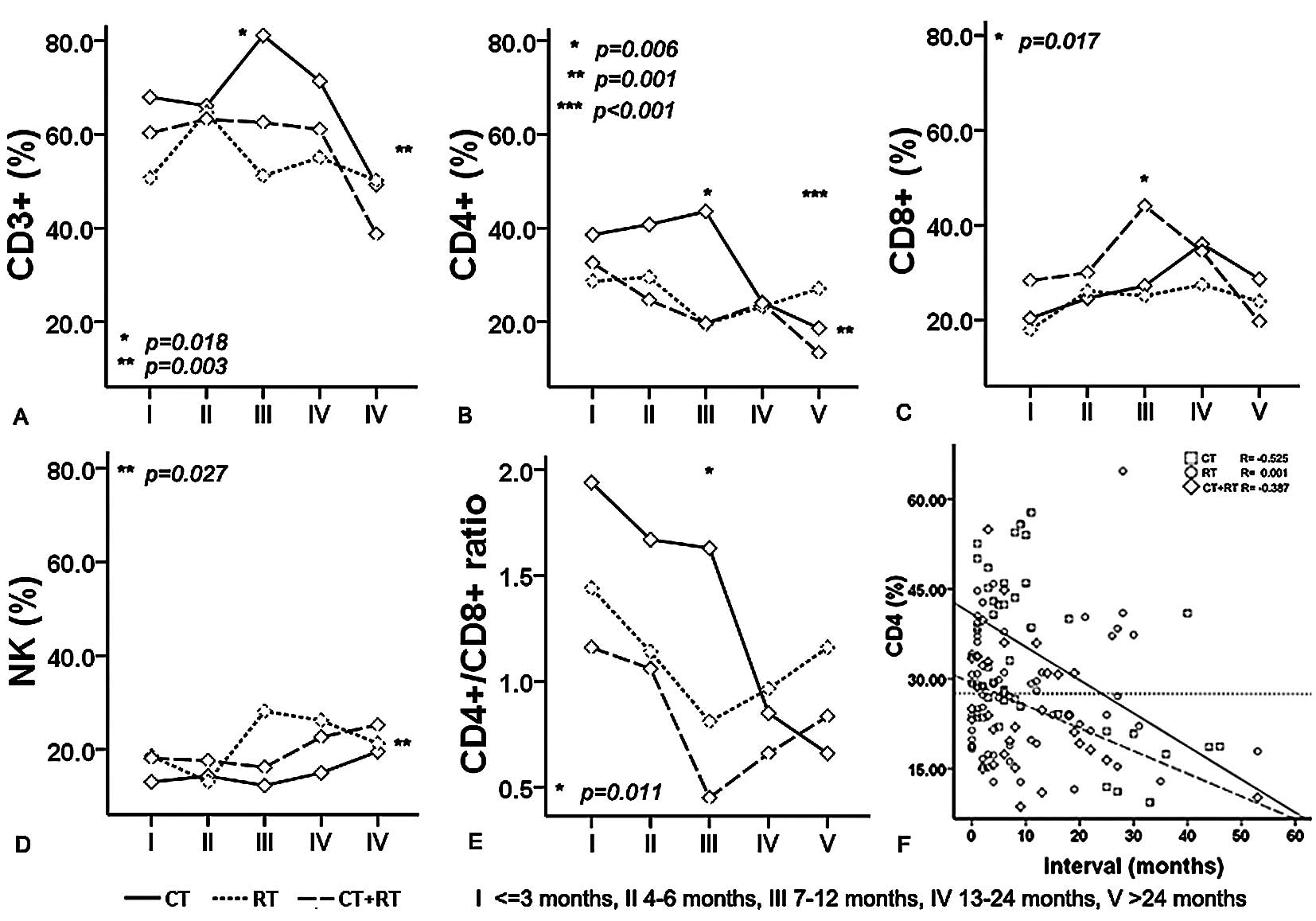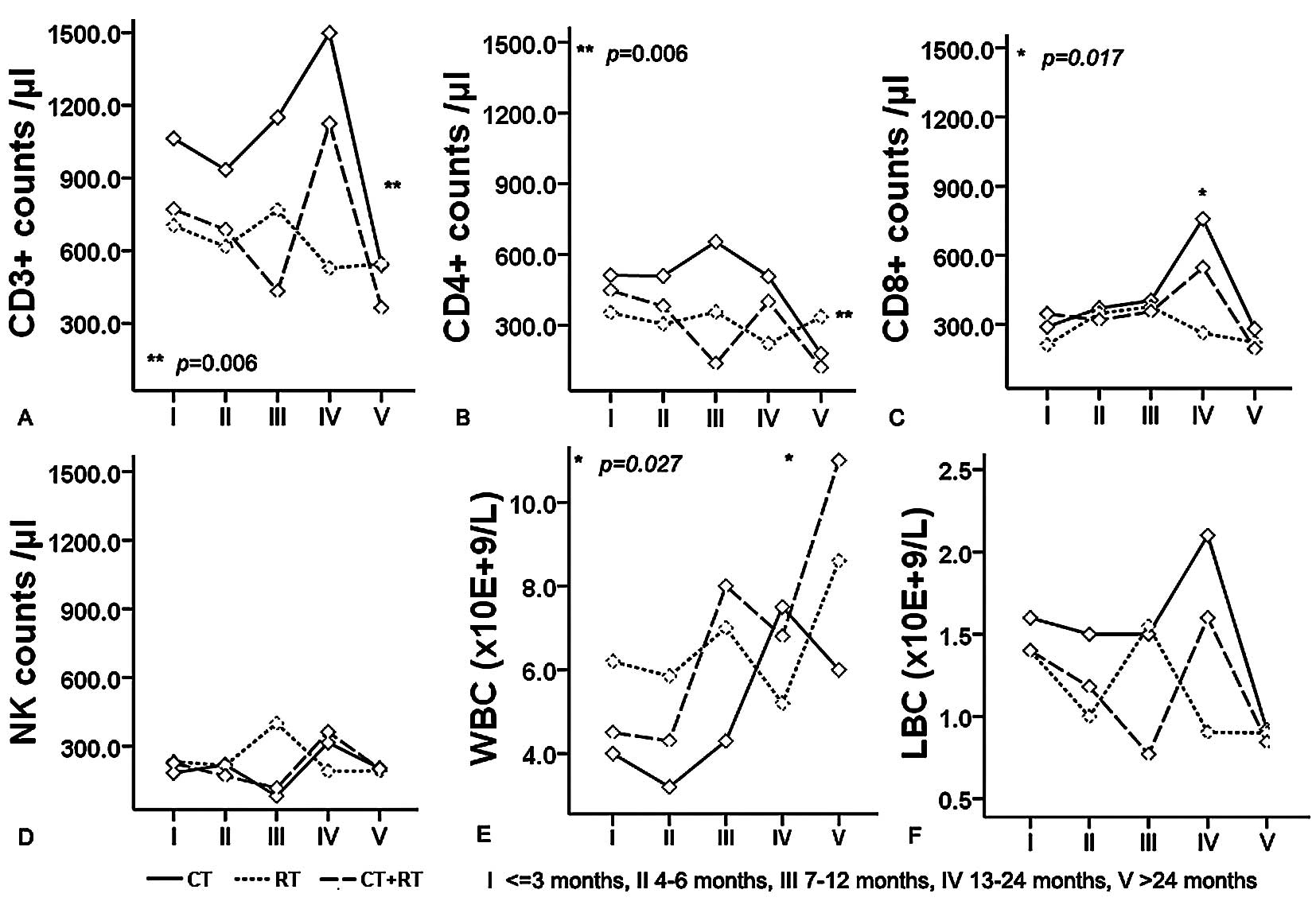|
1.
|
Koebel CM, Vermi W, Swann JB, et al:
Adaptive immunity maintains occult cancer in an equilibrium state.
Nature. 450:903–907. 2007. View Article : Google Scholar : PubMed/NCBI
|
|
2.
|
Kim R, Emi M and Tanabe K: Cancer
immunoediting from immune surveillance to immune escape.
Immunology. 121:1–14. 2007. View Article : Google Scholar : PubMed/NCBI
|
|
3.
|
Disis ML and Lyerly HK: Global role of the
immune system in identifying cancer initiation and limiting disease
progression. J Clin Oncol. 23:8923–8925. 2005. View Article : Google Scholar : PubMed/NCBI
|
|
4.
|
Knutson KL and Disis ML: Tumor
antigen-specific T helper cells in cancer immunity and
immunotherapy. Cancer Immunol Immunother. 54:721–728. 2005.
View Article : Google Scholar : PubMed/NCBI
|
|
5.
|
Ohlen C, Kalos M, Hong DJ, Shur AC and
Greenberg PD: Expression of a tolerizing tumor antigen in
peripheral tissue does not preclude recovery of high-affinity CD8+
T cells or CTL immunotherapy of tumors expressing the antigen. J
Immunol. 166:2863–2870. 2001.PubMed/NCBI
|
|
6.
|
Lin DC, Du XL and Wang MR: Protein
alterations in ESCC and clinical implications: a review. Dis
Esophagus. 22:9–20. 2009. View Article : Google Scholar : PubMed/NCBI
|
|
7.
|
Kang DH, Weaver MT, Park NJ, Smith B,
McArdle T and Carpenter J: Significant impairment in immune
recovery after cancer treatment. Nurs Res. 58:105–114. 2009.
View Article : Google Scholar : PubMed/NCBI
|
|
8.
|
Kleinberg L and Forastiere AA:
Chemoradiation in the management of esophageal cancer. J Clin
Oncol. 25:4110–4117. 2007. View Article : Google Scholar : PubMed/NCBI
|
|
9.
|
Westerterp M, Boermeester MA, Omloo JM, et
al: Differential responses of cellular immunity in patients
undergoing neoadjuvant therapy followed by surgery for carcinoma of
the oesophagus. Cancer Immunol Immunother. 57:1837–1847. 2008.
View Article : Google Scholar : PubMed/NCBI
|
|
10.
|
Formenti SC and Demaria S: Effects of
chemoradiation on tumor-host interactions: the immunologic side. J
Clin Oncol. 26:1562–1563. 2008. View Article : Google Scholar : PubMed/NCBI
|
|
11.
|
Emens LA and Jaffee EM: Leveraging the
activity of tumor vaccines with cytotoxic chemotherapy. Cancer Res.
65:8059–8064. 2005. View Article : Google Scholar : PubMed/NCBI
|
|
12.
|
Longley DB, Harkin DP and Johnston PG:
5-fluorouracil: mechanisms of action and clinical strategies. Nat
Rev Cancer. 3:330–338. 2003. View
Article : Google Scholar : PubMed/NCBI
|
|
13.
|
Heidecke CD, Weighardt H, Feith M, et al:
Neoadjuvant treatment of esophageal cancer: immunosuppression
following combined radiochemotherapy. Surgery. 132:495–501. 2002.
View Article : Google Scholar
|
|
14.
|
Van Sandick JW, Boermeester MA, Gisbertz
SS, et al: Lymphocyte subsets and T(h)1/T(h)2 immune responses in
patients with adenocarcinoma of the oesophagus or oesophagogastric
junction: relation to pTNM stage and clinical outcome. Cancer
Immunol Immunother. 52:617–624. 2003.PubMed/NCBI
|
|
15.
|
Mafune K and Tanaka Y: Influence of
multimodality therapy on the cellular immunity of patients with
esophageal cancer. Ann Surg Oncol. 7:609–616. 2000. View Article : Google Scholar : PubMed/NCBI
|
|
16.
|
Cho Y, Miyamoto M, Kato K, et al: CD4+ and
CD8+ T cells cooperate to improve prognosis of patients with
esophageal squamous cell carcinoma. Cancer Res. 63:1555–1559.
2003.
|
|
17.
|
Van der Most RG, Currie A, Robinson BW and
Lake RA: Cranking the immunologic engine with chemotherapy: using
context to drive tumor antigen cross-presentation towards useful
antitumor immunity. Cancer Res. 66:601–604. 2006.PubMed/NCBI
|
|
18.
|
Appay V, van Lier RA, Sallusto F and
Roederer M: Phenotype and function of human T lymphocyte subsets:
consensus and issues. Cytometry. A73:975–983. 2008. View Article : Google Scholar : PubMed/NCBI
|
|
19.
|
Lindemalm C, Mozaffari F, Choudhury A, et
al: Immune response, depression and fatigue in relation to support
intervention in mammary cancer patients. Support Care Cancer.
16:57–65. 2008. View Article : Google Scholar : PubMed/NCBI
|
|
20.
|
Union Internationale Contre le Cancer: TNM
Classification of Malignant Tumours. 6th edition. Wiley-Liss; New
York: 2002
|
|
21.
|
Fagnoni FF, Lozza L, Zibera C, et al:
T-cell dynamics after high-dose chemotherapy in adults: elucidation
of the elusive CD8+ subset reveals multiple homeostatic T-cell
compartments with distinct implications for immune competence.
Immunology. 106:27–37. 2002.PubMed/NCBI
|
|
22.
|
Shiku H: Importance of CD4+ helper T-cells
in antitumor immunity. Int J Hematol. 77:435–438. 2003.
|
|
23.
|
Ostrand-Rosenberg S: CD4+ T lymphocytes: a
critical component of antitumor immunity. Cancer Invest.
23:413–419. 2005.
|
|
24.
|
Pardoll DM and Topalian SL: The role of
CD4+ T cell responses in antitumor immunity. Curr Opin Immunol.
10:588–594. 1998.
|
|
25.
|
Velders MP, Markiewicz MA, Eiben GL and
Kast WM: CD4+ T cell matters in tumor immunity. Int Rev Immunol.
22:113–140. 2003.
|
|
26.
|
Hakim FT, Cepeda R, Kaimei S, et al:
Constraints on CD4 recovery postchemotherapy in adults: thymic
insufficiency and apoptotic decline of expanded peripheral CD4
cells. Blood. 90:3789–3798. 1997.PubMed/NCBI
|
|
27.
|
Vivier E, Tomasello E, Baratin M, Walzer T
and Ugolini S: Functions of natural killer cells. Nat Immunol.
9:503–510. 2008. View
Article : Google Scholar
|
|
28.
|
Sinkovics JG and Horvath JC: Human natural
killer cells: A comprehensive review. Int J Oncol. 27:5–47.
2005.PubMed/NCBI
|












